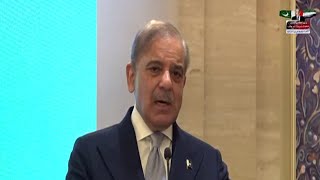Unanimity on EFF fiscal strategy: provinces to deliver Rs 444 billion surpluses: IMF
The federal and provincial governments have agreed to Extended Fund Facility (EFF) fiscal strategy and the provinces will deliver surpluses of around 1 percent of GDP (Rs 444 billion) in the fiscal year 2020, gradually increasing to 2.7 percent by the end of the programme.
The Staff Report prepared by a staff team of the International Monetary Fund (IMF) for the Executive Board's consideration for July 3, 2019 meeting and uploaded on the website stated that the federal and provincial governments have formally agreed on the programme's fiscal strategy and the required provincial surpluses (prior action).
The provinces have agreed to deliver surpluses of around 1 percent of GDP in fiscal year 2020; gradually increasing to 2.7 percent by the end of the programme, by saving the additional revenues generated through tax policy and administration reforms.
To support these efforts, the provinces will aim to increase collection of property and sales taxes, and to assume more spending responsibility.
The Fiscal Coordination Committee will meet quarterly to assess progress toward these goals. Nonetheless, stronger institutional arrangements will be required to ensure the sustainability of the envisaged fiscal consolidation.
To this end and in the context of the ongoing National Finance Commission Award, the federal and provincial governments will seek to make progress on measures aimed at better rebalancing inter-governmental relationships and improve inter-provincial horizontal equity, the report added.
"The key pillar of our fiscal strategy is to generate the revenue resources to support human capital development, while ensuring debt sustainability. We aim to increase our tax revenue by 4-5 percent of GDP and target a cumulative fiscal primary adjustment of 41/2 percent of GDP by fiscal year 2023, bringing the overall deficit in compliance with the Fiscal Responsibility and Debt Limitation Act (FRDLA) and debt on a firm downward trajectory."
This is important to strengthen economic resilience against market volatility and allow more resources to be allocated to the private sector at lower cost. At the same time, it will create fiscal space for much-needed priority spending on health, education, infrastructure, and targeted programmes for social protection.
The fiscal year 2020 budget (prior action) has been a critical step to kick-start fiscal consolidation and enhance debt sustainability. The budget targets a primary fiscal adjustment of 1.2 percent of GDP, mostly through high-quality revenue measures aimed at broadening the tax base. Key measures include: (i) eliminating tax concessions and exemptions and reducing zero-rated products, particularly on sales tax; (ii) increasing the excise duty on cigarettes and introducing new excise duties; (iii) reducing the personal income tax thresholds and increasing the rate; (iv) and enhancing the sales tax of petroleum products.
The budget also incorporates all government-provided implicit subsidies, amounting to Rs 35 billion, that in the past have been a significant contributor to the accumulation of circular debt in the energy sector. "Finally, to support the efforts to reduce inflation, we have set federal government wage increases to 7.5 percent to maintain a tight income policy."






















Comments
Comments are closed.